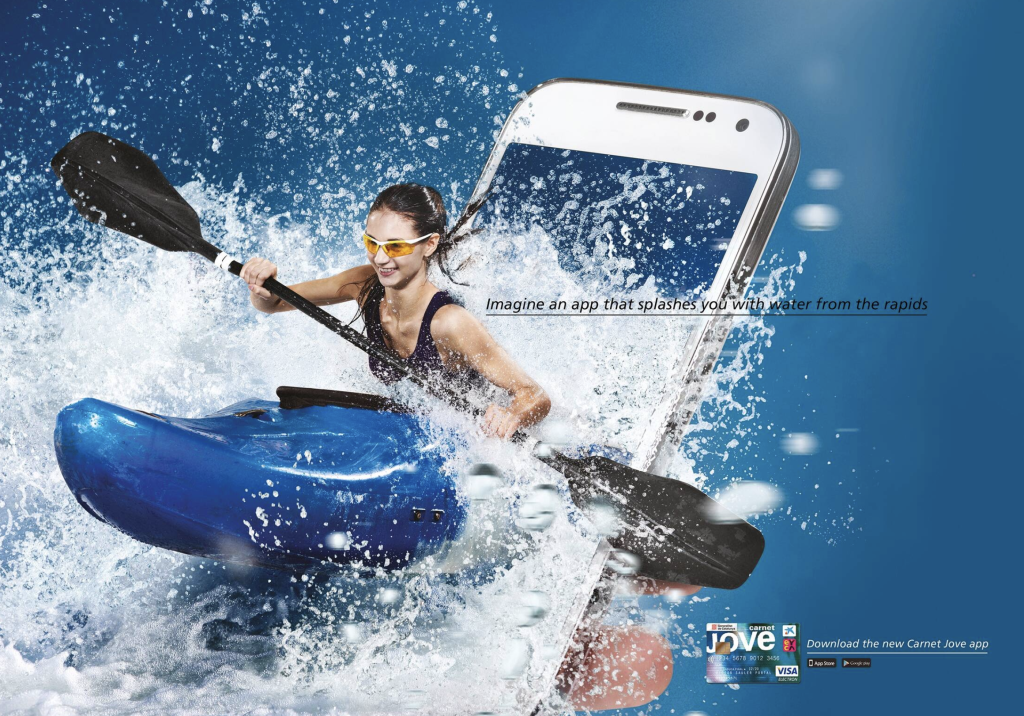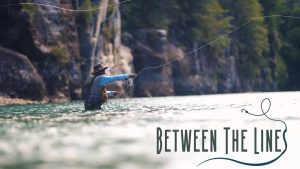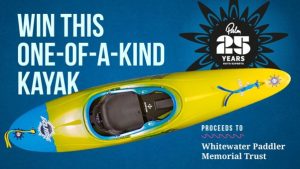With increased visibility for paddle sports in mainstream arenas comes surprising new opportunities and potential.

©adsoftheworld.com
Lately, paddle sports are visible everywhere you look. Celebrities do it. Paddleboards, kayaks, and canoes feature in advertisements ranging from trucks and alcohol to life insurance and financing family vacations. Instead of needing a specialty store, entry-level products are sold at the supermarket.
“We have the interest of the masses; now we need to convert that interest into passion,”
It’s undeniable that paddle sports have reached the mainstream, becoming synonymous with an adventurous lifestyle. It’s a development that benefits the entire industry. The more visible paddle sports become, the more paddling culture seeps into the public consciousness, laying the foundation for good things to come that go far beyond participation numbers alone.
“We have the interest of the masses; now we need to convert that interest into passion,” says NRS CMO Mark Deming. For Deming, passion doesn’t need to dominate a user’s outdoor life. Even holding one-third of a person’s time, attention, and budget places paddlesports in a position to compete with snow sports, cycling, climbing, backpacking, etc. “Essentially, our job is to make paddling a third of an outdoors person’s recreational mix, a third of their garage or gear closet, a third of a person’s spending on gear.”

©adsoftheworld.com
“Just as boardshorts brought surfing’s sun-soaked, laid-back style to the larger world, items iconic to paddling culture, whether sun hoodies or dry bags, are finding homes on dry land”.
With paddling’s increasing popularity and visibility comes new avenues for revenue and the chance to broaden brand reach with crossover and lifestyle goods, from base layers to accessories and changing ponchos. According to The Daily at Outdoor Retailer in February 2023, while hard goods sales are down, sales of water sports accessories such as booties, helmets, gloves, and hoods are up. Dry gear sales also showed a significant increase, combining for millions in sales.
Just as boardshorts brought surfing’s sun-soaked, laid-back style to the larger world, items iconic to paddling culture, whether sun hoodies or dry bags, are finding homes on dry land. Take Teva, whose flagship sandal originated on the Grand Canyon of the Colorado River, and who used the ethos “freedom to roam” to become a globally-recognized footwear brand. With surf companies like Roxy and RipCurl successfully bridging the gap between core surf culture and mainstream fashion, it stands to reason that paddling brands are poised to do the same, selling not just technical gear but paddling lifestyle and culture.
It’s not just paddling; the entire outdoors is having a mainstream moment. Fleece has become fashionable. Metal water bottles are everywhere. Gucci collaborated with The North Face, and Prada recently partnered with Red Bull (who has their own fashion label, Alpha Tauri) to make whitewater kayaker Aniol Serrasolses’ descent of waterfalls flowing off the Svalbard glacier possible— a feat shared on major international news channels.

As mainstream news, Aniol’s feat inspired awe on a global scale. The Svalbard Project, which was partly inspired by climate change and the rapid melting of the glaciers, showcased another benefit of mainstream exposure. The more people see paddling, the greater the platform for the environmental issues our waterways face, whether or not that exposure drives people to paddle or drives sales.
As exciting as it is to see missions like Svalbard featured on mainstream news channels, the extreme side of paddle sports is often more intimidating than encouraging. To truly capitalize on this exposure and drive more people to try paddle sports, we need subtler, smaller promotions that make anybody feel they could enjoy a day out on the water—no glaciers needed. Getting everybody, anybody, to think about trying paddle sports will be the true mark of making it to the mainstream.
“It’s why paddling—SUP, sea kayaking, whitewater, even casual touring—now often stands in for the idea of adventure rather than hiking, biking, or even surfing.”
While some still confuse “paddle sports” with pickleball, we’ve come a long way. The foundation is there for continued growth, and it’s hard not to be optimistic about the future. Our community is growing, welcoming a wider variety of users. Our gear is improving in comfort and technical performance, and our exposure is helping more people than ever realize paddling exists—and it’s fun! Sure, no matter how many advertisements feature paddling, the inherent risk of watersports means it may never be seen as accessible as hiking or biking for the majority of outdoor enthusiasts, but this isn’t necessarily a disadvantage.

©adsoftheworld.com
The allure of paddle sports lies in the spirit of exploration, celebrating the beauty of nature, embracing the freedom of the outdoors, and connecting to something bigger than ourselves. With only a few strokes, paddling takes you truly somewhere different, allowing access to the heart of nature even in the midst of a major city. It’s why paddling—SUP, sea kayaking, whitewater, even casual touring—now often stands in for the idea of adventure rather than hiking, biking, or even surfing.
Whatever comes of our increased visibility, be it more paddlers, new opportunities for revenue, or global brand domination, to be an accepted, normalized outdoor activity promoting a passion for the outdoors while empowering adventure and the protection of our wild places in the public sphere is a milestone worth celebrating.




